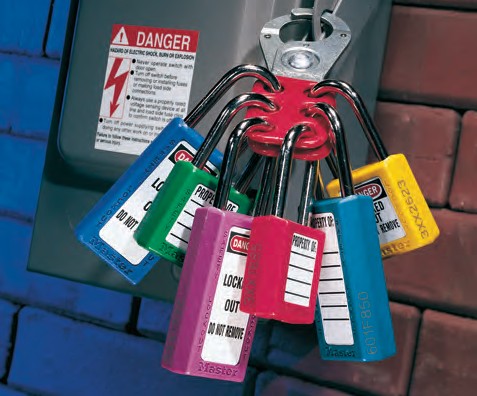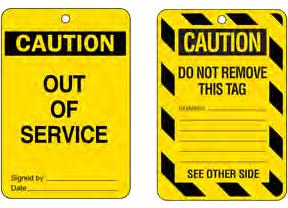The risks associated with any plant or equipment undergoing inspection, maintenance, cleaning, repair or construction should be assessed and appropriate control measures put in place.
Before work commences the plant should be stopped, appropriately isolated/locked and danger tagged, and any stored energy should be dissipated.
Examples of energy sources include electricity, hydraulic pressure, compressed air or gas, gravity, kinetic spring tension and moving parts.
Separate controls away from the plant operator or immediate work area must also be isolated or locked and danger tagged.
Isolation Procedures
An isolation procedure is a set of predetermined steps that should be followed when workers are required to perform tasks such as inspection, maintenance, cleaning, repair and construction.
The aim of an isolation procedure is to:
- isolate all forms of potentially hazardous energy to ensure that an accidental release of hazardous energy does not occur
- control all other hazards to those doing the work
- ensure that entry to a restricted area is tightly controlled.
The following lock-out process is the most effective isolation procedure:
- shut down the machinery and equipment
- identify all energy sources and other hazards
- identify all isolation points
- isolate all energy sources
- in the case of electrical equipment ‘whole current isolation’, such as the main isolator, should be used instead of ‘control isolation’ by way of the stop button on a control panel
- control or de-energise all stored energy
- lock-out all isolation points, using padlocks, multi- padlock hasps and danger tags
- 'danger tag' machinery controls, energy sources and other hazards.


Test that the isolation is effective by ‘trying’ to reactivate the plant without exposing the tester or others to risk. Failure to reactivate the plant means that the isolation procedure is effective and that all stored energies have dissipated.
This may require further measures to safely release these energies e.g. hydraulic or pneumatic pressure, suspended weight or compressed springs.
Locks and danger tags
Every person working on isolated equipment should fit their own lock and/or danger tag. Alternatively, another management approved system that achieves an equivalent level of safety may be used.
When using locks or danger tags, consider the following:
- tags should be dated and signed
- locks should be accompanied by a corresponding tag to identify who has locked out the plant
- tags and locks should only be removed by the person who applied them or by the supervisor after consultation with the signatory of the danger tag. In the event
- that the person who applied the danger tag is unavailable, their tag or lock may only be removed in accordance with a management approved procedure
- danger Tags and/or locks should be fitted to all isolation points.
Out-of-service tags
Out-of-service tags are used to identify equipment or machinery that has been taken out of service due to a fault, damage or malfunction.

The out-of-service tag is to be securely fixed to the operating control power isolator with the appropriate details completed on the tag (explaining the reason for the machine being ‘out of service’).
The out-of-service tag should not be removed until the equipment is safe to be returned to service, or the reason for the out-of-service tag no longer exists.
The out-of-service tag may be removed by:
- the person who attached it
- the supervisor responsible for the operation or repair of the equipment
- the maintenance person who carried out the repairs.




